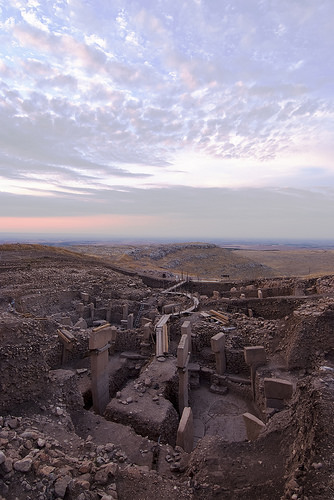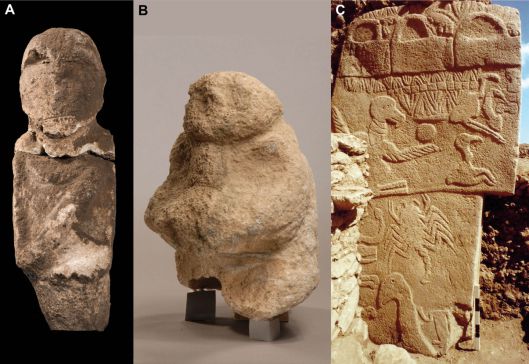At https://anthropology.net/2017/06/29/gobekli-tepe-skull-cult/ … Gobekli Tepe pillars have carvings of headless humans, and animals …

 … In Science Advances (June 2017) Julia Greskey et al, a paleopathologist (an archaeological bone specialist) speculates on the discovery of three skulls with deep cuts made by a sharpened stone tool, a modification done after death. They allowed the skulls to be suspended. Speculation was immediately rife after the news surfaced – was there a skull cult at Gobekli Tepe?
… In Science Advances (June 2017) Julia Greskey et al, a paleopathologist (an archaeological bone specialist) speculates on the discovery of three skulls with deep cuts made by a sharpened stone tool, a modification done after death. They allowed the skulls to be suspended. Speculation was immediately rife after the news surfaced – was there a skull cult at Gobekli Tepe?
However, other skulls found at the site show no evidence of use after death – so the idea of a skull cult may be far fetched to say the least. Interestingly, at Neolithic Catal Huyuk (in the 6th millennium BC) bodies holding decorated skulls have been found buried beneath houses, indicating some ancesters were revered. Presumably, as found in sites around the world, some ancestors were venerated and kept around for several generations, sometimes in a mummified condition. Skulls lasted the longest – and would have been more susceptible to the process of preservation.
At http://popular-archaeology.com/issue/summer-2017/article/in-turkey-carve… … we have the same story. It says more than likely the skulls were carved and decorated to venerate ancestors not long after their death, a not uncommon practise.
